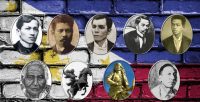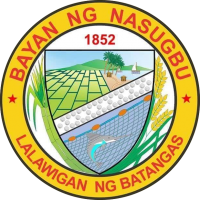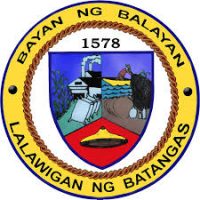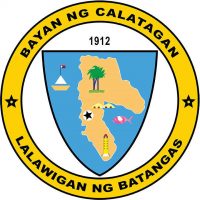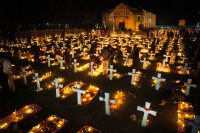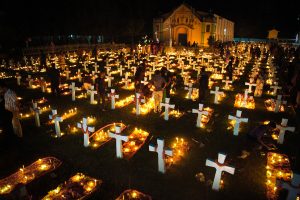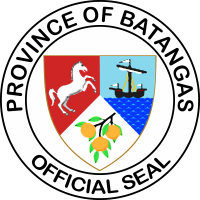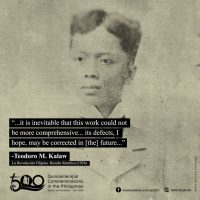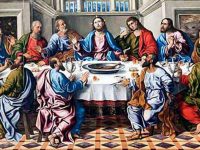Christmas in the Philippines celebrates the birth of Jesus Christ who, according to Biblical tradition, was sent by God to save people from sin and death. The holiday is held every 25 December.
The Christmas season in the Philippines is summed up in three words: faith, family and food – with the three intertwined in almost every event. Masses are held in churches leading up to Christmas Day, with many feasts held alongside them. The length of the season varies: Christmas can last from a few weeks to a few months. Christmas carols are played in the shopping centres and malls from as early as September until well into January.
A clear sign the Christmas season has truly begun is the hanging of star-shaped lanterns called parol in every public space and household. The parol, representing the Star of Bethlehem, is unique to the Philippines and is as quintessential to the season as Christmas trees and fake snow are to the Western cultures.
In the week leading up to Christmas, a series of masses called Misa de Gallo are held late every night. On Christmas Eve, there is (you guessed it) another mass held at midnight helpfully named, “Midnight Mass”, followed by a traditional family feast called Noche Buena running well into the early hours of Christmas morning.
A Christmas lunch is prepared for extended family where they open presents, eat, play games, sing karaoke, and eat some more. Older members of the family are revered and traditions, such as Pagmamano (taking the older family member’s hand and gently placing it on one’s forehead as a sign of respect), are practiced. The day ends only when people are too full to eat or are obliged to go to another household to eat some more.
Bonifacio Day is a national public holiday every 30 November in the Philippines to celebrates the birthday of one of the country’s greatest heroes, Andrés Bonifacio.
Born on 30 November 1863, Bonifacio is considered as the Father of the Philippine Revolution against Spanish colonisation. He, along with some others, started a movement known as the ‘Katipunan’ in 1892. The Katipunan was a secret revolutionary society that instigated military revolts against the Spanish colonisers.
Bonifacio became the Katipunan’s military leader and the president of the revolutionary government, which (according to some historians) makes Bonifacio the first president of the Philippine Republic. Bonifacio and the Katipunan recruited many citizens to their cause, eventually becoming the most prominent revolutionary force the Spaniards had to face.
However Bonifacio’s leadership was contested by some others, and in particular, Emilio Aguinaldo. After a series of leadership challenges and internal rifts, Aguinaldo violently took over the revolutionary forces and unjustly ordered Bonifacio to be tried and executed under the guise of treason.
Bonifacio Day is held every 30 November, or the Monday nearest this day to create a long weekend. Unlike the main national hero, José Rizal, Bonifacio Day is celebrated on his day of birth, rather than his day of death. This is because Bonifacio was killed by his fellow countrymen, rather than at the hands of foreign colonisers.
National Heroes Day in the Philippines is a public holiday to honour and remember the country’s National heroes.
These heroes are the men and women in Philippine history whose acts of courage enabled the Philippines to grow as a nation. Whilst National Heroes Day celebrates both known and unknown heroes, a National Heroes Committee was set up in 1995 to recommend those who should be counted as ‘National Heroes’. Following certain criteria, they found a select group of people who, they believed, should be honoured for their deeds. These were:
- Jose Rizal
- Andres Bonifacio
- Emilio Aguinaldo
- Apolinario Mabini
- Marcelo H. del Pilar
- Sultan Dipatuan Kudarat
- Juan Luna
- Melchora Aquino
- Gabriela Silang
Jose Rizal and Andres Bonifacio were two of the main proponents against Spanish rule. As a result, both were also given their own special days commemorating their lives and deeds.
National Heroes Day in the Philippines is held every last Monday of August. This date was chosen as it marked the beginning of the Cry of Pugad Lawin in 1896, the start of the Philippine revolution against the Spanish colonisers.
Filipinos celebrate National Heroes Day by attending local commemorations (e.g. parades, wreath laying at shrines, etc.). As it is a day off for most workers, people often spend the rest of the day with family and friends at parks, shopping malls and other public areas. Small firework displays may also be held during the evenings in some local areas.
Matuto kung paano dapat i-Brand online ang iyong negosyo o business idea!
Ang mga magrerehistro ay makakatanggap ng Electronic Certificate Of Participation mula sa Sangguniang Kabataan ng Barangay Bulacnin!
Online celebration of 172nd Founding Anniversary of San Juan, Batangas and Lambayok Festival on December 12, 2020.
Celebration of Fiesta De Los Toros at Nasugbu, Batangas on December 1-3, 2020.
Balayan Batangas Founding Anniversary on December 08, 2020.
Calatagan, Batangas Founding Anniversary December 16, 2020
All Saints’ Day in the Philippines is usually celebrated on the first and second day of November. In the Philippines, this holiday is often referred to as Undas.
All Saints’ Day is an important day in many Catholic countries. As the Philippines is the world’s third largest Catholic country, the country celebrates it with gusto. Traditionally, All Saints’ Day marks a Roman Catholic holiday that celebrates saints who were not awarded their own feast days. It also marks a celebration of the lives of the deceased.
All Saints’ Day in the Philippines is celebrated similarly to the way the holiday is marked in other former Spanish colonies like Mexico. On November 1st each year, people flock to their family plots in cemeteries across the country. They also use this holiday to hold a family reunion where groups of an extended family gather together.
The day is filled with music and food. There is also prayer and religious traditions. At the end of the day, people will often camp overnight in the cemetery to pay their respects to their dead relatives. Visitors remark that Filipinos are remarkably at home among their dead ancestors.
Filipinos are known for having great respect for their dead. To prepare for Undas, families will visit the graves of their ancestors before the holiday to clean up the area and perform maintenance. During the holiday, people will decorate the graves with flowers and candles. The cemeteries will come alive during this period.
In addition to these traditions, other Catholic traditions are also observed. Many cemeteries will hold a special mass during the day. The rest of the day is often marked by periods of prayer and the recitation of the Litany for the Dead.
This holiday is a mix of the observance of the dead and a joyful holiday. Families bring plenty of food and drink for their dead relatives. Some believe that the deceased are taking part in the feast alongside the living. While most bring food directly to the cemetery, other families will also leave food at home on altars for any relatives who aren’t buried in the cemetery.
The Philippines is the largest Christian country in Asia. As a result, much of the country shuts down over these two days. Offices and schools both close during this period.
Batangas Province Founding Anniversary December 08, 2020
December 05, 2020 Teodoro Kalaw 80th Death Anniversary Commemoration
Independence Day in the Philippines is held every 12 June and commemorates the Philippines’ declaration of independence from Spanish colonial rule.
The original Independence Day was held in 1898 in present day Kawit, Cavite where General Emilio Aguinaldo read out the The Act of the Declaration of Independence. Whilst this was an important milestone for Filipinos, the Spanish government did not recognise their independence.
They then went on to give the Philippines to the United States after the Spanish-American war as part of the peace treaty. After a war and the Philippines’ own treaty with the United States, independence was granted to the Philippines on 4 July 1946, coinciding with the American Independence Day.
4 July was celebrated as Independence Day until 1964. After mounting pressure from the community, the government declared that 12 June would be The Philippines’ Independence Day and a national holiday. 4 July in the Philippines would then become the Philippines’ Republic Day.
A parade in Manila marks the official celebrations, attended by the President and government officials. The parade showcases the Philippines’ armed forces as well as some local organisations and the different ethnic groups of the Philippines. Firework displays are also held, particularly in Manila.
Maundy Thursday is the start of the main Easter celebrations in the Philippines, which is part of the larger Holy Week celebrations. According to Biblical tradition, Jesus was crucified on the Cross on a Friday (hence, “Good Friday”), and Maundy Thursday commemorates the events leading up to the Crucifixion.
Maundy (also known as the “Washing of the Feet”) is a religious rite. A re-enactment of the Lord’s Supper and Jesus washing his disciples’ feet are often observed on this day. Filipinos traditionally visit either seven or 14 churches (this tradition is called visita iglesia or “to visit churches”) where this re-enactment is held.
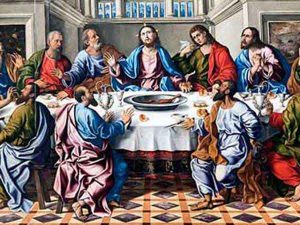
 WOWBatangas.com Your Source of Great News and Stories from the Province of Batangas, Philippines
WOWBatangas.com Your Source of Great News and Stories from the Province of Batangas, Philippines








